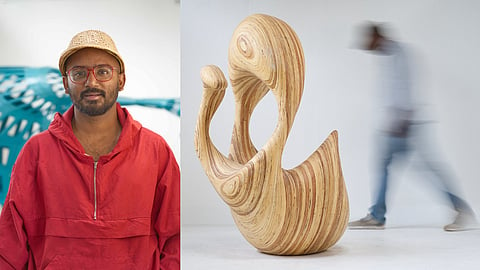
- HOMEGROWN WORLD
- #HGCREATORS
- #HGEXPLORE
- #HGVOICES
- #HGSHOP
- CAREERS
- ABOUT US
- CONTACT US

Even as a serial binger who consumes an unholy amount of movies and tv shows, I cannot stand mediocrity. I’m not trying to be an insufferable film bro either. What I mean is, I can and often have enjoyed a ‘bad’ film. There is still fun to be had in its narrative failure. I’d choose a ‘flop’ Nicholas Cage flick over an ‘okay’ movie any day. I think my trigger lies in the spoon feeding that happens in mediocre films: the lack of concealment, no definitive sense of mystery, and zero trust in the viewer’s sensibilities and ability to grasp the story without having it over-explained. It suffocates me. I’d rather have a story go over my head; I’d rather be too dumb for a film than be too smart.
The same philosophy applies to abstract expressionism that entrusts the delivery of an artwork’s intent to the emotions it creates rather than purely through the imagery of it. It believes that art should come from and reach the unconscious mind, instead of the conscious one that operates on the obvious which, like I said, can be boring or even intolerable.
Harsha Durugadda, an artist from Hyderabad, whose practice rests on the same tenets of abstract expressionism, creates with an ontological approach. His sculptures use technique, form, and material to draw reference to and from human behaviour. Through their shapes, the sculptures create an emotional rhythm and movement that lead the viewer towards their interpretations of the art.
Harsha's recent projects use stripped-down forms to highlight the dichotomy and evolution of existence. ‘Every Rose has its Thorn’, symbolizes the complexity of beauty. Just as the tender petals of a rose are accompanied by sharp agonizing thorns, so are the joys and victories in life, that stand on the underlying skeletons of hardship, grief, and pain.
'Geology Of Spirit’ depicts growth and history through its mushroom-like tentacle that rises from the base, forming a central void. In its form, it resembles the geological strata made up of several layers of minerals, evoking a sense of ancient history and gradual transformation.
Even the tactile quality of the sculpture, that comes from gluing together thin sheets of wood and is reminiscent of the concentric rings that determine the age of a tree, tell a story of growth. With its smooth surfaces interrupted by these lines, the sculpture invites exploration and connects the viewer to the material’s organic origins, becoming a metaphor for time, resilience, and the hidden narratives within natural forms.
This organic and process-oriented approach is a departure from the artist’s previous works that leaned towards constructivism and futurism, which is a result of a change in the his lifestyle that coincided with a move away from the city where he established Oorna Farm on the outskirts of Hyderabad. “Embracing natural living, growing part of my food, and being amidst this beautiful landscape have profoundly informed my aesthetic choices. Observing a weaver bird building its nest next to my home with nothing but blades of grass and an Asian hornet constructing its nest using clay have both inspired me to explore the concept of growing sculptures,” Harsha explains.
Recently the artist has started experimenting with mycelium where he grows sculptures from mushrooms using sawdust as a substrate. These works were displayed at an exhibition called ‘Climate Recipes' which focused on climate resilience.
Although these experiments are part of his ongoing quest to integrate natural processes into his art, Harsha doesn't claim to be sustainable. “I am not afraid to use other materials like stone, metal, or plastics. As a creative, I can only satisfy my hunger through creative expression.”
In his current projects, the artist has thrown himself into creating sculptures that invite viewers to engage with them on multiple sensory levels. One such project involves the use of augmented reality (AR) to overlay digital elements onto physical sculptures, allowing viewers to experience an enhanced, layered interaction. Another ongoing project explores the use of kinetic elements within sculptures, where movement and viewer interaction are integral to the experience.
Harsha’s practice has made him one of the most extraordinary homegrown contemporary artists from India. Through his work he aims to break both the traditional boundaries of sculpture and how it’s experienced.
Follow Harsha here.
If you enjoyed reading this, here's more from Homegrown:
Visit A Delhi Exhibition Using Culinary Objects To Take Us On A Journey Through Time
A Homegrown Studio Is Making Sustainable & Design-Forward Furniture Out Of Mushrooms
Explore Desire, Connection, & Fantasy With 3 Exceptional Homegrown Sculpture Artists
